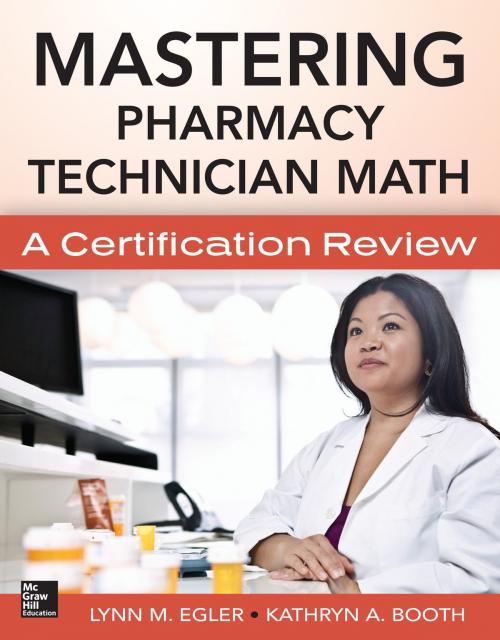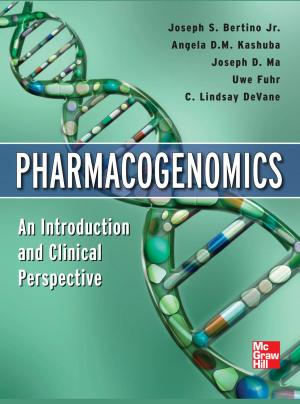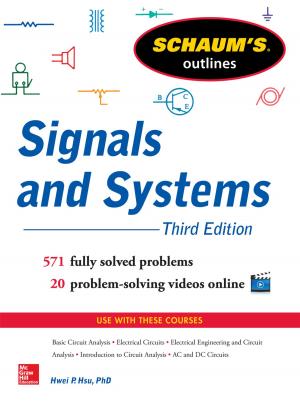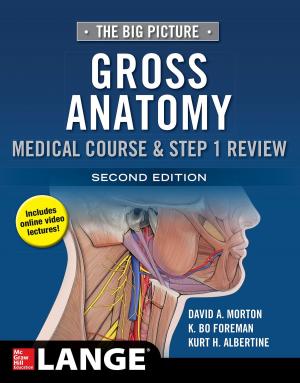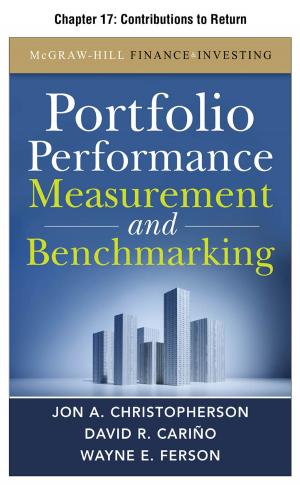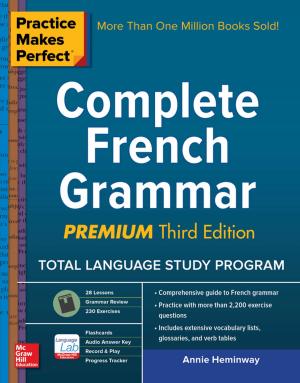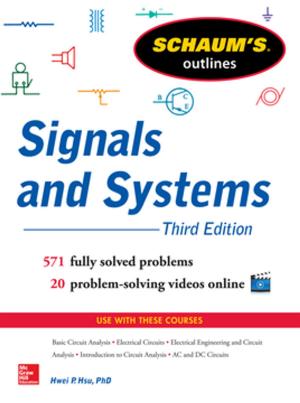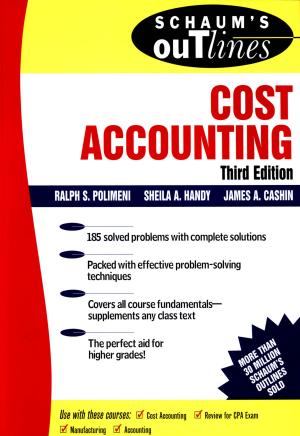Mastering Pharmacy Technician Math: A Certification Review
A Certification Review.
Nonfiction, Health & Well Being, Medical, Specialties, Pharmacy| Author: | Lynn M. Egler, Kathryn A. Booth | ISBN: | 9780071829694 |
| Publisher: | McGraw-Hill Education | Publication: | June 22, 2014 |
| Imprint: | McGraw-Hill Education / Medical | Language: | English |
| Author: | Lynn M. Egler, Kathryn A. Booth |
| ISBN: | 9780071829694 |
| Publisher: | McGraw-Hill Education |
| Publication: | June 22, 2014 |
| Imprint: | McGraw-Hill Education / Medical |
| Language: | English |
The review you need to excel on the Pharmacy Technician Certification Board Examination!
Mastering Pharmacy Technician Math: A Certification Review is a super-effective way for students preparing for the Pharmacy Technician Certification Board Examination to improve their ability to perform basic math and pharmacy-specific calculations. The book includes powerful learning aids such as practice exercises in each chapter, end-of-chapter Q&A, a 50-question pretest that reviews key concepts, and three 100-question practice tests to prepare you for the board exam. All questions are correlated to the learning outcomes found in the book so you know exactly what to review should you answer a question incorrectly.
Mastering Pharmacy Technician Math: A Certification Review is logically divided into ten chapters:
Chapter 1: Mathematical Concepts -- reviews the basic mathematical building blocks needed to master advanced pharmacy calculations, including fractions, decimals, percents, ratios, proportions, conversions, and cross-multiplication.
Chapter 2: Numbering Systems -- reviews the different systems of measurement and how to convert within and between them, including working with temperatures and time.
Chapter 3: Understanding Drugs and Drug Orders -- identifies drug strengths, doses, drug forms, and routes of administration and explains how to identify and interpret information on drug labels, package inserts, prescriptions, and medication orders.
Chapter 4: Methods of Dosage Calculations -- presents methods to perform dosage calculations correctly, including fraction proportion, ratio proportion, dimensional analysis, and formulas.
Chapter 5: Oral Dosages -- describes the processes for calculating dosages, amount to dispense, and estimated days' supply for oral medications.
Chapter 6: Parenteral Dosages (Excluding Intravenous) -- describes parenteral medications, including those given by injection; inhalants; transdermal, ophthalmic, and otic drugs; and drugs placed in the rectum or vagina.
Chapter 7: Intravenous Calculations -- describes how to calculate IV concentrations and how to prepare medications for continuous and intermittent IV infusion.
Chapter 8: Special Preparations Calculations -- describes the processes to calculate concentrations, ratio strengths, final volume/final strength, and dilutions, as well as how to write recipes to prepare compound drug orders and perform alligation calculations.
Chapter 9: Medication Safety and Calculations -- discusses pharmacokinetics, high-alert medications, look-alike/sound-alike medications, how to calculate drug half-life values, pediatric and geriatric calculations, DEA controlled substance requirements related to prescriber DEA numbers, and how to perform the calculation needed to verify DEA number validity.
Chapter 10: Business, Inventory, and Reimbursement Calculations -- discusses reimbursements and patient payments, and describes how to calculate overhead costs, profits and losses, markups, turnover rates, and correct costs and change.
The review you need to excel on the Pharmacy Technician Certification Board Examination!
Mastering Pharmacy Technician Math: A Certification Review is a super-effective way for students preparing for the Pharmacy Technician Certification Board Examination to improve their ability to perform basic math and pharmacy-specific calculations. The book includes powerful learning aids such as practice exercises in each chapter, end-of-chapter Q&A, a 50-question pretest that reviews key concepts, and three 100-question practice tests to prepare you for the board exam. All questions are correlated to the learning outcomes found in the book so you know exactly what to review should you answer a question incorrectly.
Mastering Pharmacy Technician Math: A Certification Review is logically divided into ten chapters:
Chapter 1: Mathematical Concepts -- reviews the basic mathematical building blocks needed to master advanced pharmacy calculations, including fractions, decimals, percents, ratios, proportions, conversions, and cross-multiplication.
Chapter 2: Numbering Systems -- reviews the different systems of measurement and how to convert within and between them, including working with temperatures and time.
Chapter 3: Understanding Drugs and Drug Orders -- identifies drug strengths, doses, drug forms, and routes of administration and explains how to identify and interpret information on drug labels, package inserts, prescriptions, and medication orders.
Chapter 4: Methods of Dosage Calculations -- presents methods to perform dosage calculations correctly, including fraction proportion, ratio proportion, dimensional analysis, and formulas.
Chapter 5: Oral Dosages -- describes the processes for calculating dosages, amount to dispense, and estimated days' supply for oral medications.
Chapter 6: Parenteral Dosages (Excluding Intravenous) -- describes parenteral medications, including those given by injection; inhalants; transdermal, ophthalmic, and otic drugs; and drugs placed in the rectum or vagina.
Chapter 7: Intravenous Calculations -- describes how to calculate IV concentrations and how to prepare medications for continuous and intermittent IV infusion.
Chapter 8: Special Preparations Calculations -- describes the processes to calculate concentrations, ratio strengths, final volume/final strength, and dilutions, as well as how to write recipes to prepare compound drug orders and perform alligation calculations.
Chapter 9: Medication Safety and Calculations -- discusses pharmacokinetics, high-alert medications, look-alike/sound-alike medications, how to calculate drug half-life values, pediatric and geriatric calculations, DEA controlled substance requirements related to prescriber DEA numbers, and how to perform the calculation needed to verify DEA number validity.
Chapter 10: Business, Inventory, and Reimbursement Calculations -- discusses reimbursements and patient payments, and describes how to calculate overhead costs, profits and losses, markups, turnover rates, and correct costs and change.
